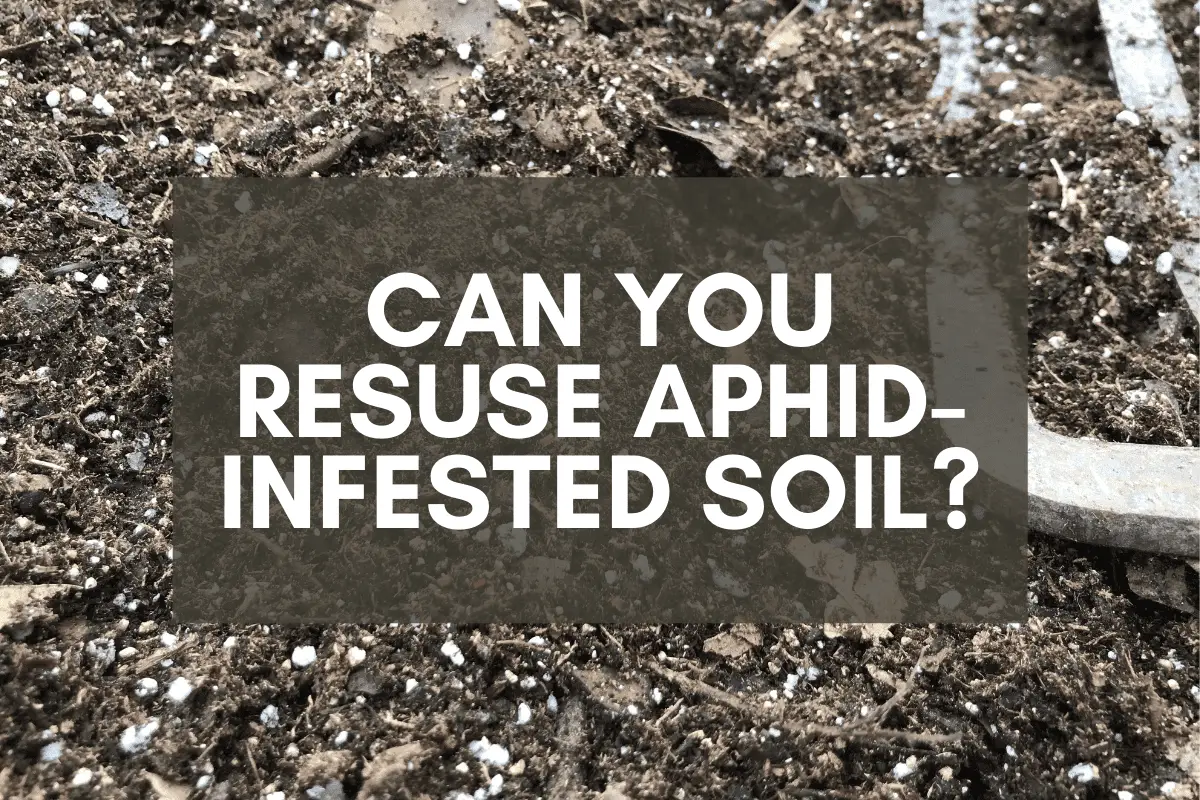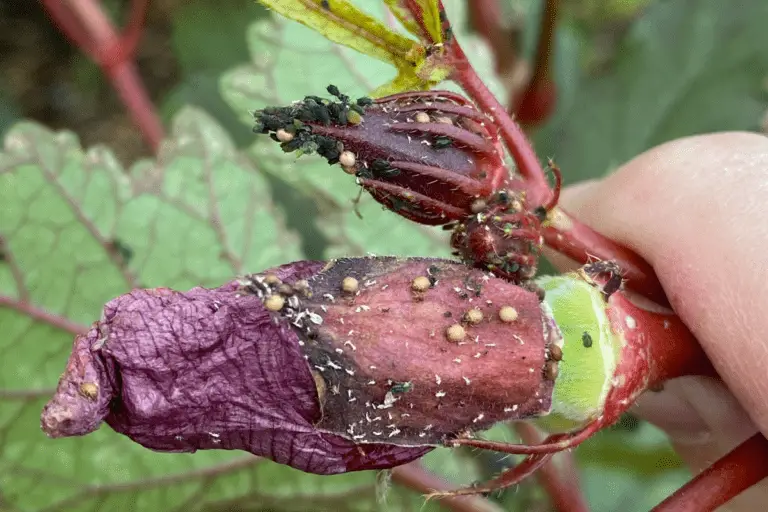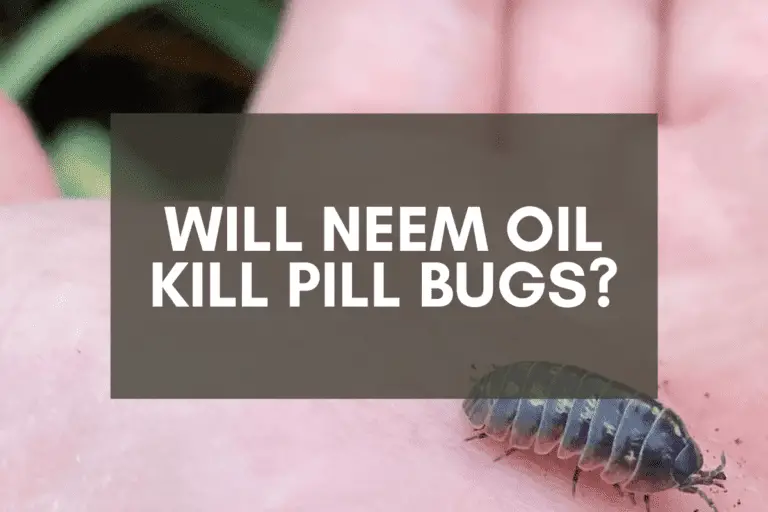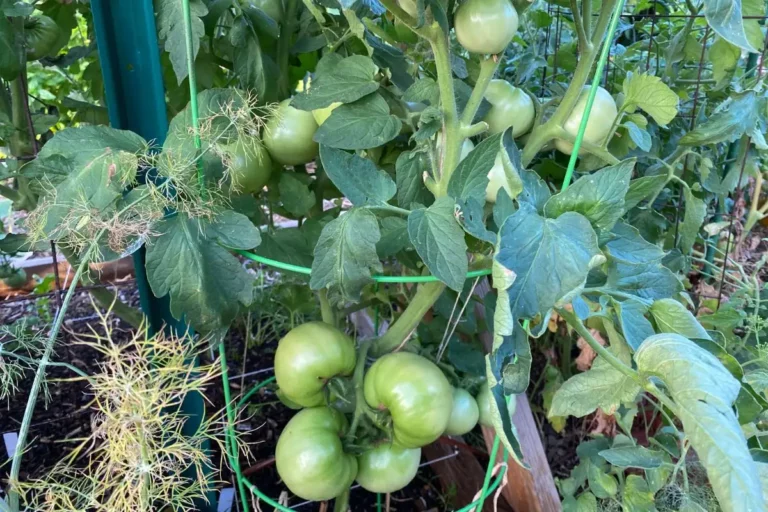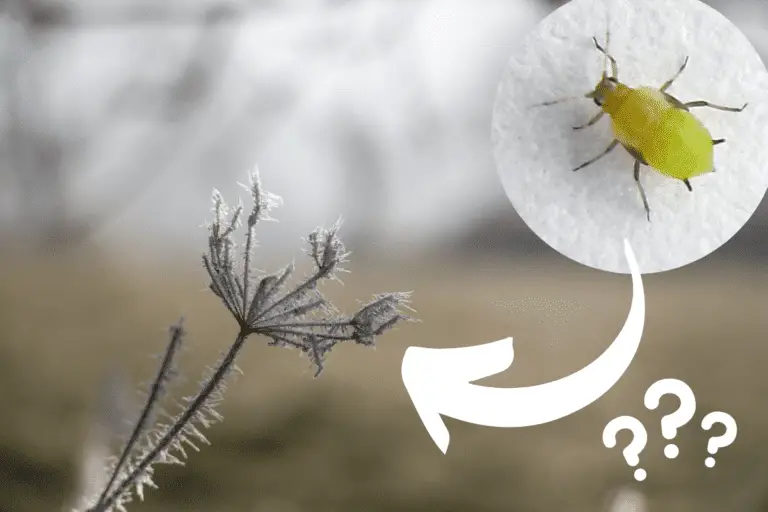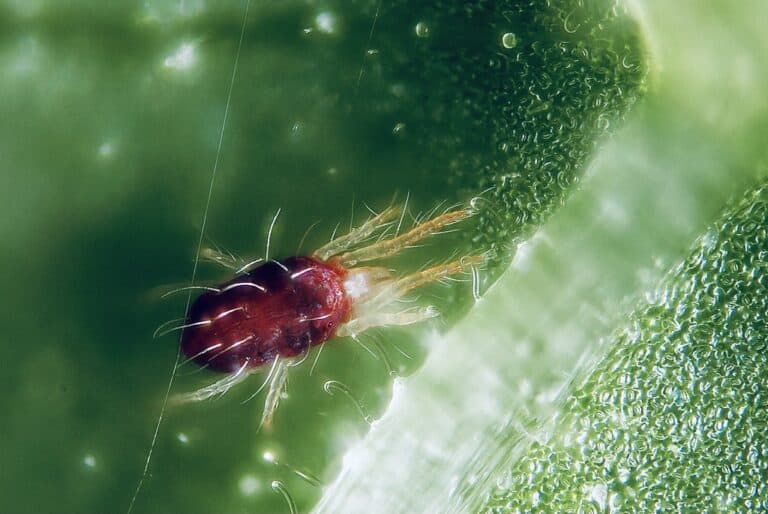Reusing Aphid-Infested Soil: Should You Do It?
Over the years, I’ve grown plants in raised beds, in-ground beds, and containers. No matter where I’m growing my plants, I’m always interested in cultivating healthy soil.
But if you’ve been dealing with an aphid infestation, you might be wondering what that means for your soil. Can you reuse soil that an aphid-infested plant has grown in?
Soil can be reused even after heavy aphid infestations because aphids feed and reproduce among the plant’s branches and foliage, not in or underneath the soil. Even aphid eggs won’t typically overwinter in soil. As long as the infested plant is removed, the soil can be reused.
That being said, you’ll need to make sure that what you’re dealing with are aphids and not their closely related cousins root aphids (Daktulosphaira vitifoliae).
Root aphids are white and live in the soil, which is where they feed and lay eggs. As their name implies, root aphids damage plants’ root systems and require different treatment methods than those used on aphids.
But whether you’re dealing with aphids in your garden, or their lesser-known root aphid cousins, you’ll want to read below to learn more about how to handle both kinds of pests—and what to do with your soil—when they show up on your property.
What Do You Do with Aphid-Infested Soil?
Let’s start with aphids since, at 4,700 species, they are far more numerous and more widely distributed across the world than root aphids.
When aphids infest a plant, they seek out the plant’s branches and foliage, their leaves in particular. What they’re wanting to do is to use their mouthparts to pierce plant tissue in search of phloem cells, which the plant uses to transport nutrients. Once they’ve found the phloem cells, they begin siphoning off the plant’s sap and thus depriving it of its energy.
Despite the many varieties of aphid species that exist in the world, this is how all members of the Aphididae family feed. What these insects do not do is to seek out or burrow into soil. There’s simply no sustenance in soil, so aphids have no good reason to spend much time around the base of plants unless there’s plenty of fallen foliage that they can suck nutrients from.
If you’ve got an aphid-infested plant, you’ll first need to determine whether or not you can save the plant or whether it needs to be tossed in the trash or possibly composted. If the plant can’t be saved and isn’t worth composting, simply remove it and put it into the trash immediately.
Once you’ve cleared that space in your garden–or in a pot if you’re container gardening–you’ve got several options.
1. Reuse Soil As Is
I’ve seen various bloggers warn readers not to reuse soil where an aphid-infested plant was grown. In fact, I just noticed an article the other day–from a very popular blog–that advised gardeners to toss out their old soil and replace it with “sterilized” store-bought soil.
But here’s what I think: No one who’s actually dealt with aphids would advise you to do something like this. Let me explain.
Aphids are fragile creatures, and despite their ability to reproduce exponentially, they experience high mortality rates each year, as do their eggs (estimates vary, but the mortality rate for aphids can be as high as 80% or more).
If you completely remove the aphid-infested plants, you’ve eliminated most, if not all, of the aphids in that part of your garden. Could an aphid or an aphid egg theoretically survive that kind of traumatic displacement? Sure, I guess it’s possible. But it’s highly unlikely.
In fact, I’ve pulled up numerous aphid-infested plants over the years and planted something else shortly thereafter. I’ve usually waited 3-4 days out of an abundance of caution–and I’ve never replaced an aphid-infested plant with a plant of the same variety–but I’ve had great success simply reusing the soil where the previous plant had grown.
This past year, I pulled out a few aphid-infested okra that weren’t worth keeping and replaced them with various pea plants. Guess what happened with the aphids? Absolutely nothing. They were nowhere to be found after I tossed out the infested okra plants.
If you’ve got a container garden, I recommend dumping the leftover soil into a wheelbarrow, then amending with compost and peat moss, but there’s no need to be concerned about your soil. You can just put it right back in the pot it came from and plant something else.
If you’re really worried about the possibility of aphids surviving after you’ve ripped out an aphid-infested plant, there are two things you can do to give yourself an extra level of protection (or even just some peace of mind).
2. Use an Insecticidal Spray
Before you remove an aphid-infested plant, mix up a homemade soapy water spray using 1 gallon of water and 5 tablespoons of liquid soap per gallon. Add the water to a 1-gallon sprayer, then add the soap and give it a few shakes.
Once your spray is thoroughly mixed, pump the sprayer to provide the proper pressure and liberally spray the soil where the aphid-infested plant had been growing. Spray the surrounding plants as well, especially on the undersides of their leaves, just in case.
This won’t do anything for root aphids, but if any aphid adults or nymphs managed to survive after you pulled the infested plant out of the soil, they’ll be coated in soapy water and will die within a few days.
3. Apply a Fish Emulsion Soil Application
If you’re in need of some extra peace of mind–and if you’d like to fertilize your soil in the process–I recommend a fish emulsion soil application.
Fish emulsion is an incredible liquid fertilizer that’s derived during the manufacturing of fish meal. It contains nitrogen, phosphorus, and potassium (at an NPK ratio of 5-1-1) as well as a few additional trace minerals, and it can be applied once or twice a week.
If you’ve dealt with a recent aphid infestation, and you want to make absolutely sure that no aphids survive after you pull up your damaged plants, I recommend mixing 2 tablespoons of fish emulsion per gallon of water. Using a water can, simply pour the mixture over the soil, soaking everything.
Any aphids that survived up to this point will likely die after the soil application. And if there were no aphids in or around the soil, that’s perfectly fine as well because you’ve added micronutrients that will benefit the next plant that’s grown in that space.
How Do You Get Rid of Aphids in Soil?
If you see aphid-looking bugs in or underneath your soil, you’ve likely got a root aphid problem on your hands, and the methods mentioned above aren’t going to stop root aphids.
The best way to clear soil of root aphids is to apply a strong pyrethrin-based insecticide to the soil. Pyrethrins are chemicals that occur naturally in chrysanthemum flowers and that have a toxic effect on many garden pests. Pyrethrin insecticides will penetrate the soil and kill any root aphids living below the surface.
I recommend purchasing a pyrethrin concentrate–the concentrates produced by Bonide and Southern Ag are my favorites–and creating your own pyrethrin soil treatment.
Simply mix ½ tablespoon of pyrethrin concentrate per gallon of water, then apply to your soil using a watering can. Make sure to apply heavily to any areas where you know or suspect that you’ve got root aphids.
Most importantly, read the directions carefully and follow what the manufacturer says. If you apply too much pyrethrin spray to an area, you can harm your plants, so you’ll want to make sure you’re mixing everything according to the information found on the label.
Can Aphids Stay in the Soil?
Unlike their root aphid cousins, aphids do not live in or beneath soil. They cannot survive in such environments because they need to feed on plants’ micronutrients in order to live and reproduce.
The only reason aphids would be found at soil level is if you’ve got some kind of low-lying ground cover (weeds, fallen leaves, mulch, etc.) that they can feed on or lay eggs amidst. Without these conditions, aphids who find themselves in soil won’t survive very long if they can’t make their way to a new host plant.
Do Aphid Eggs Overwinter in the Soil?
Aphids will never purposefully lay their eggs in the soil. Once fall arrives and the weather begins to cool, aphids will typically lay their eggs on the undersides of leaves, in between branches, or around buds.
Some species might lay eggs near the soil if there’s bark or mulch that provides a safe haven for doing so. But unlike root aphids, which overwinter in the soil, aphids aren’t going to dig or burrow into the soil to lay their eggs there.
If you’ve got a root aphid problem, you’ll want to follow my advice above and treat the infestation before the root aphids lay eggs that’ll overwinter in your soil.
Want to Learn More?
If you’re interested in learning more about aphids and their impact on your garden plants, you might want to check out these articles:
- Are Aphids White? How to Spot and Get Rid of White Aphids
- Can Aphids Survive Cold Weather?
- Can Plants Recover from Aphids? Tips to Save Your Plants
- Can You See Aphids on Plants? Spotting Early Infestations
- Should I Throw Away a Plant with Aphids? Things to Consider
- Where Do Aphids Come From? Things to Consider
